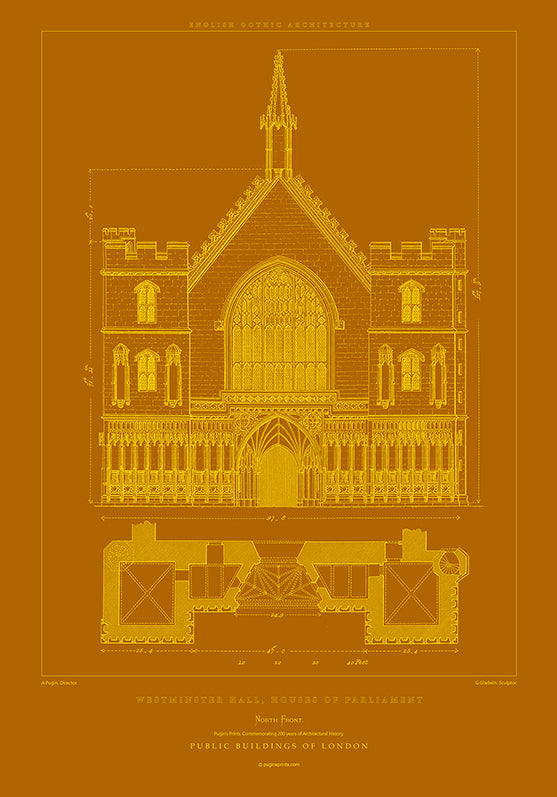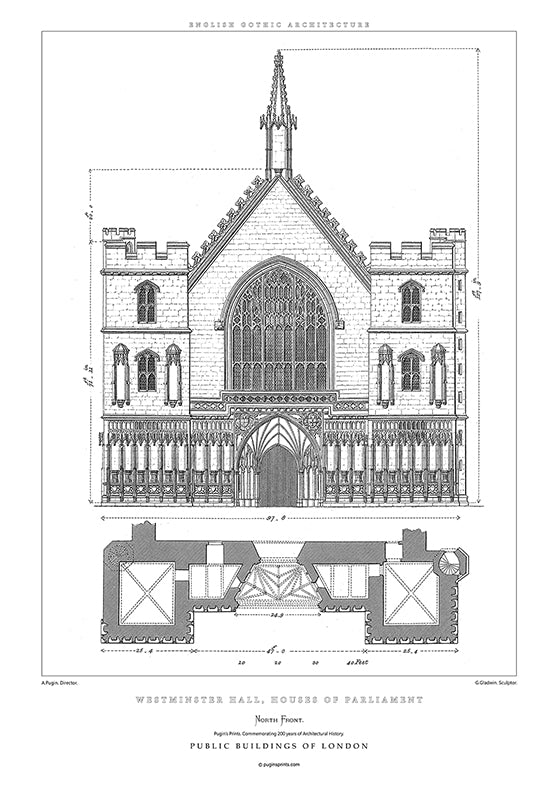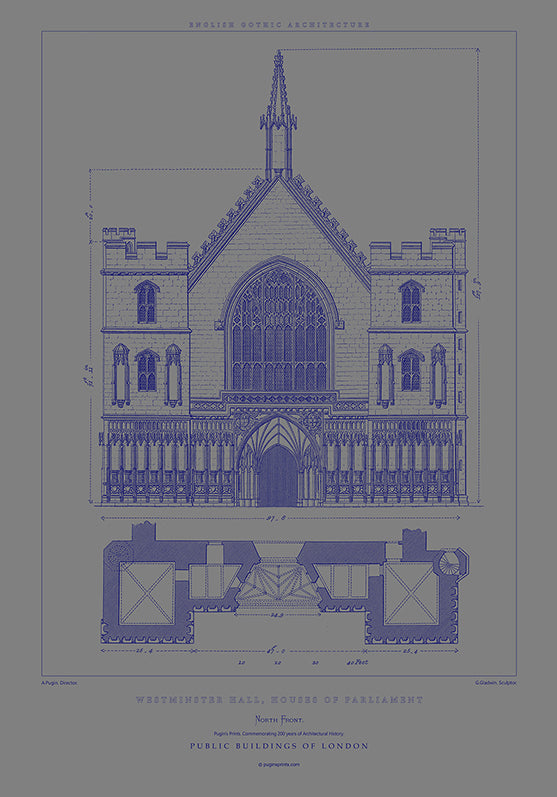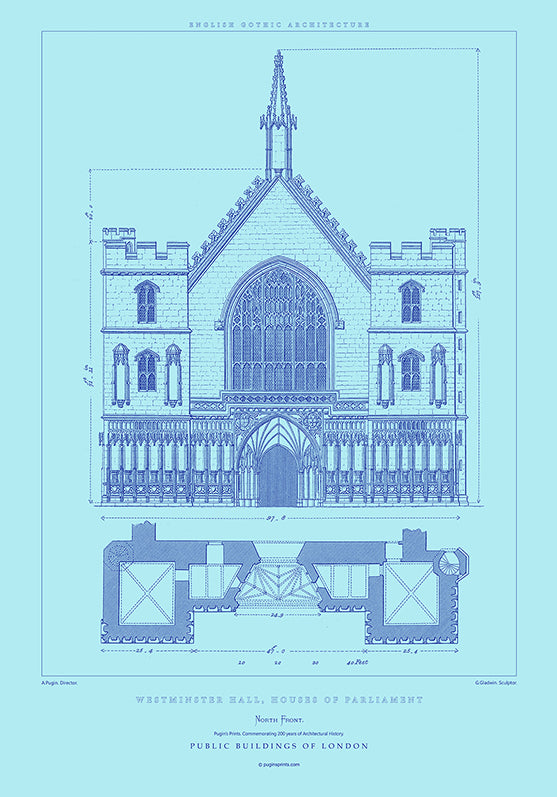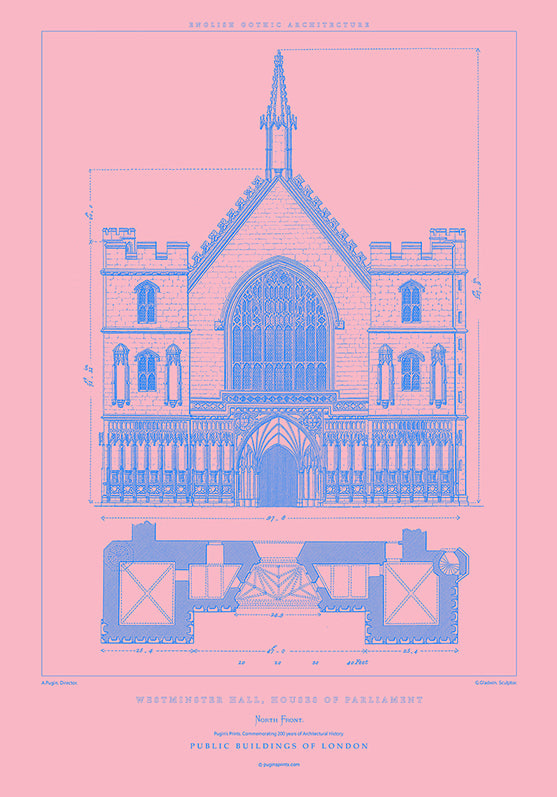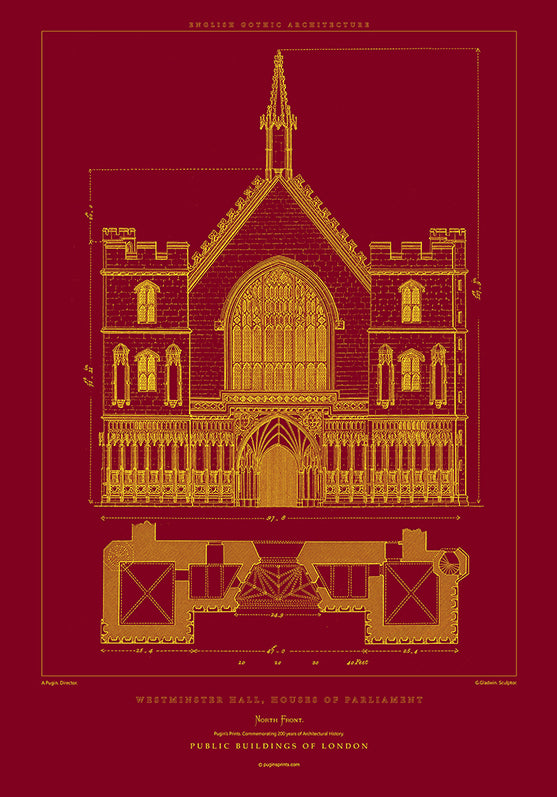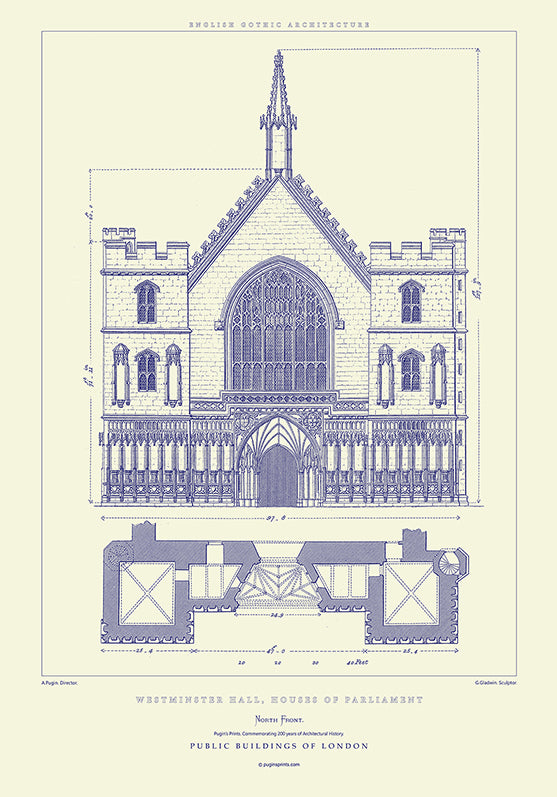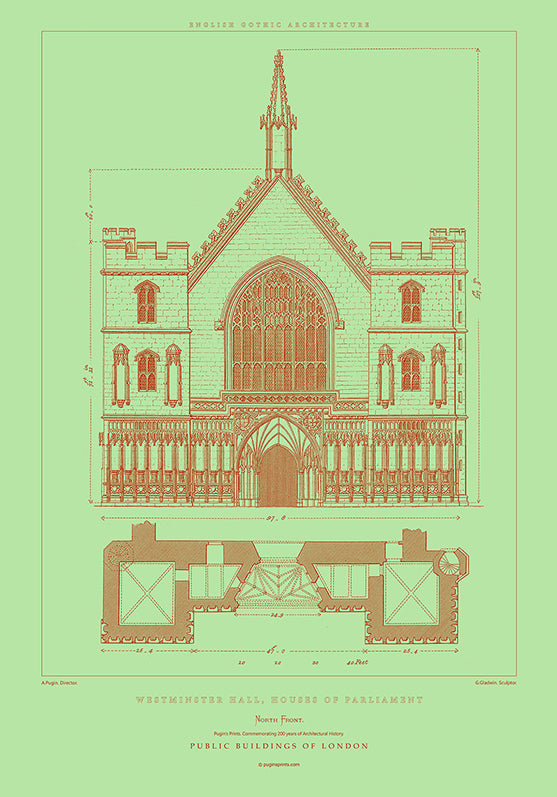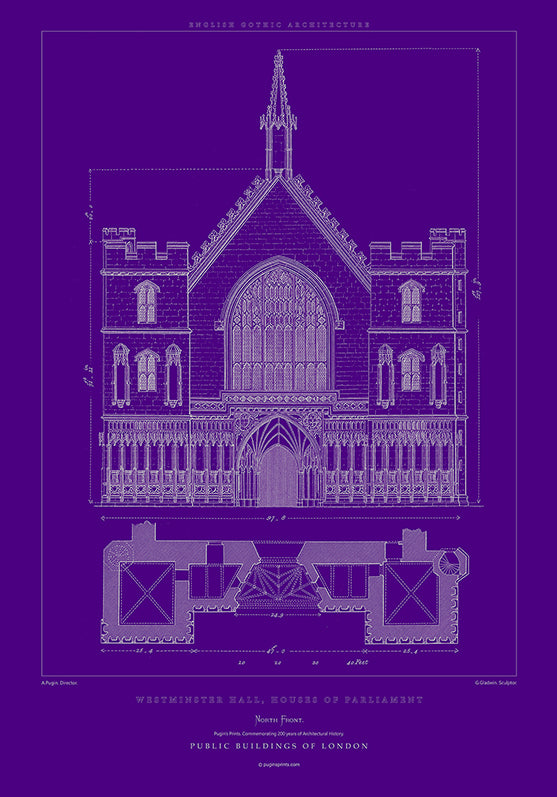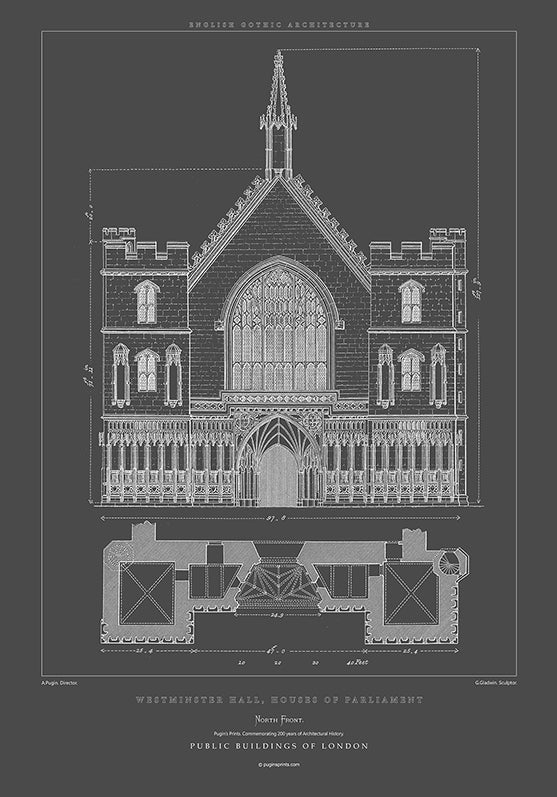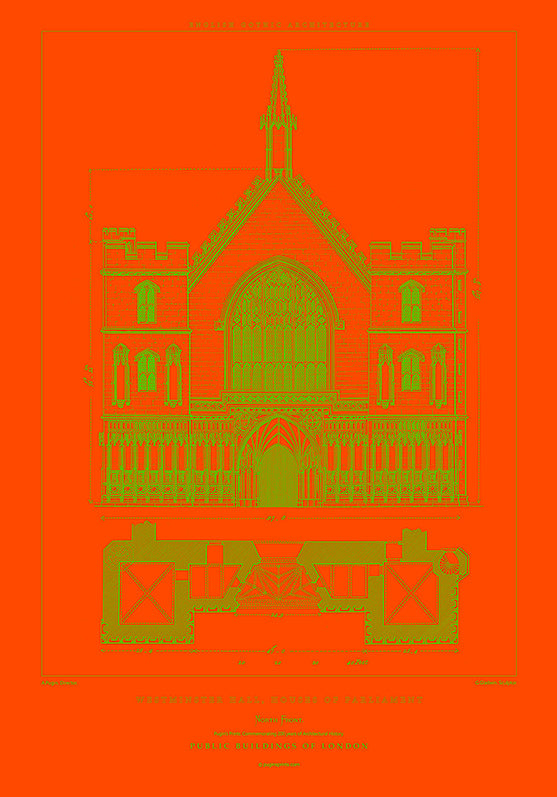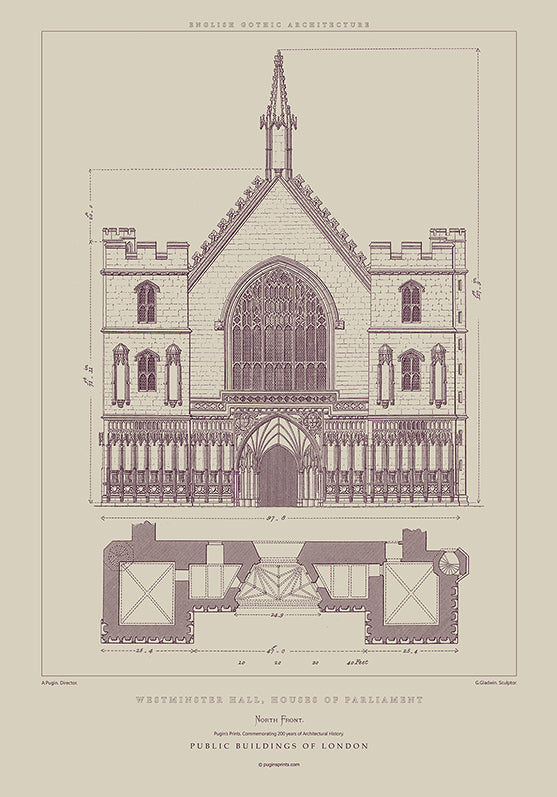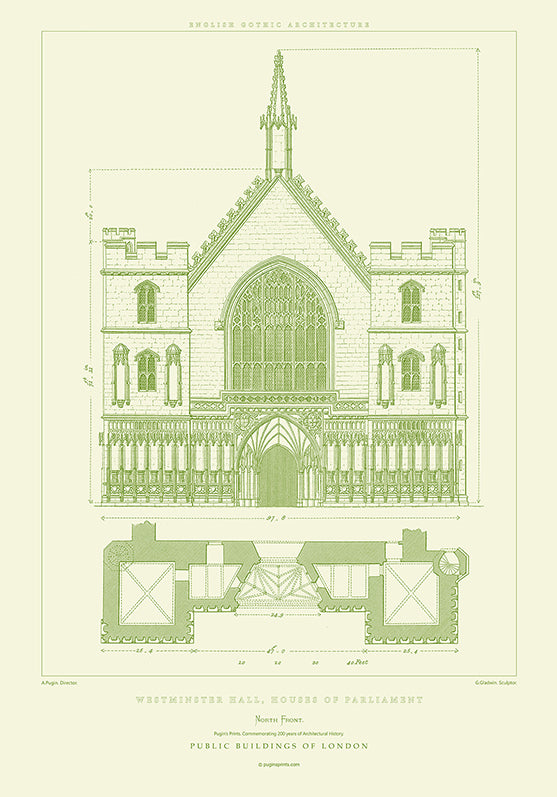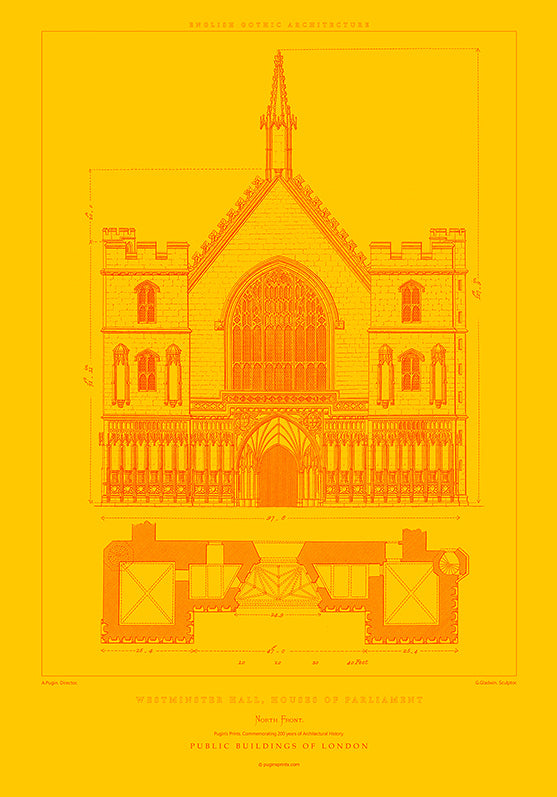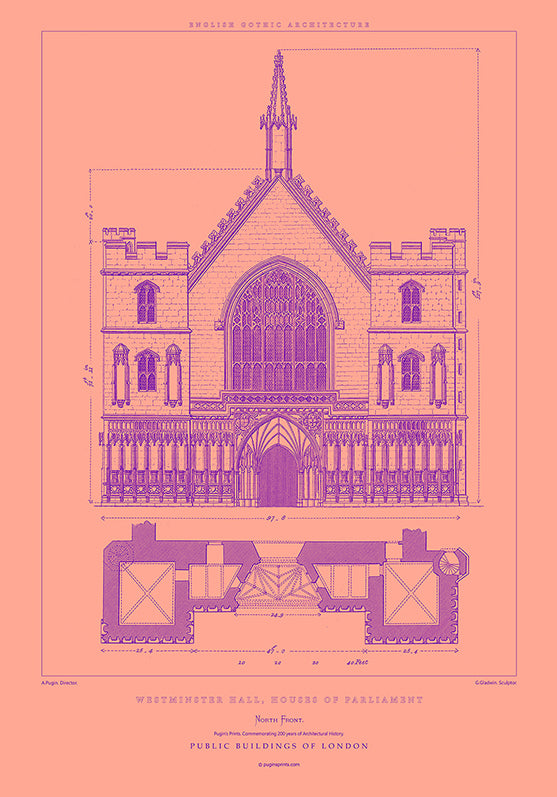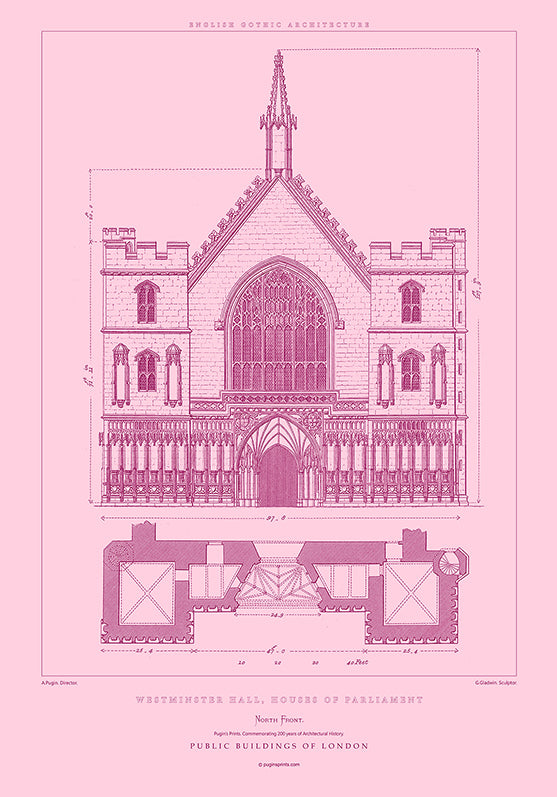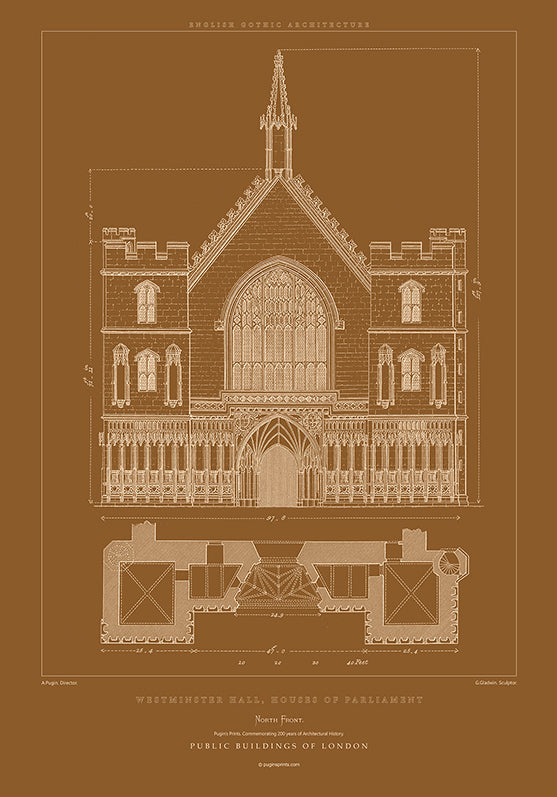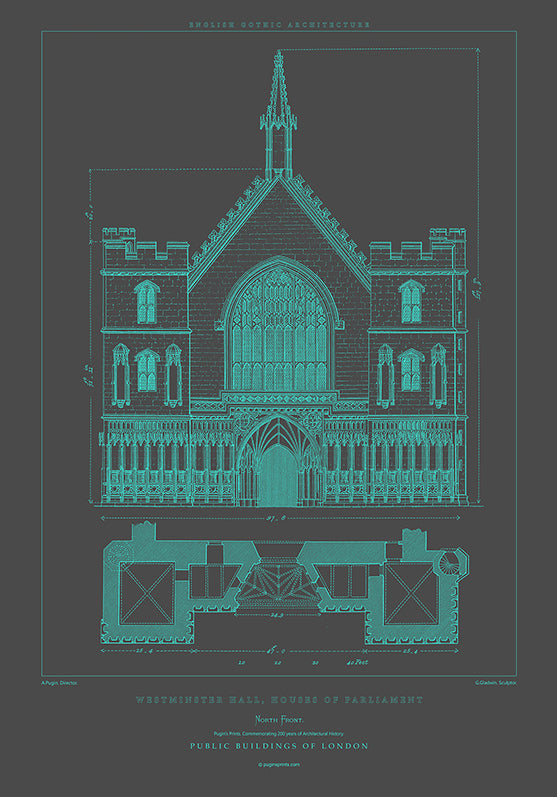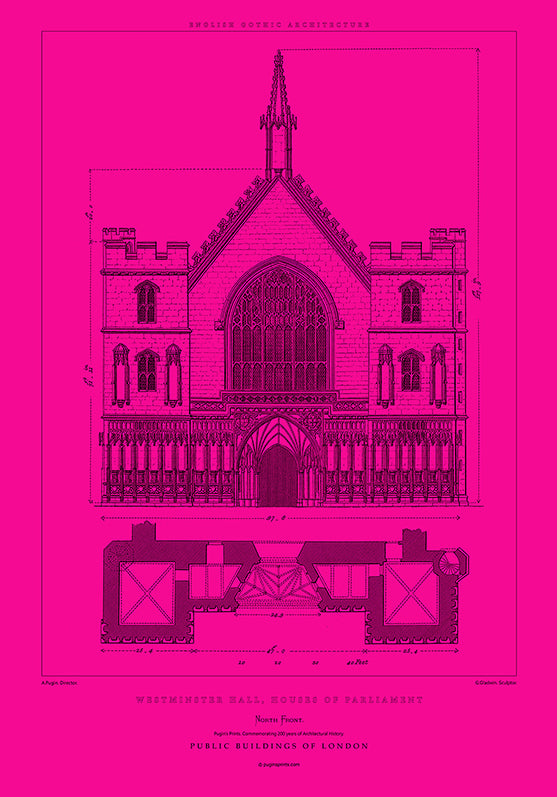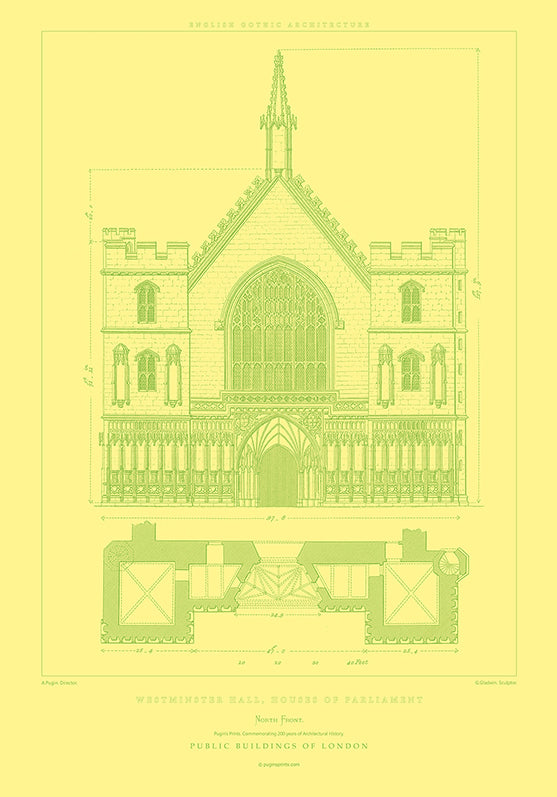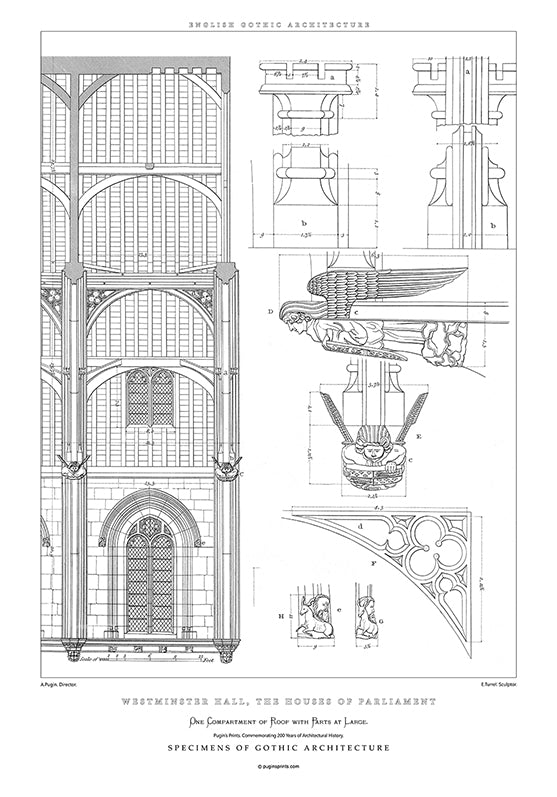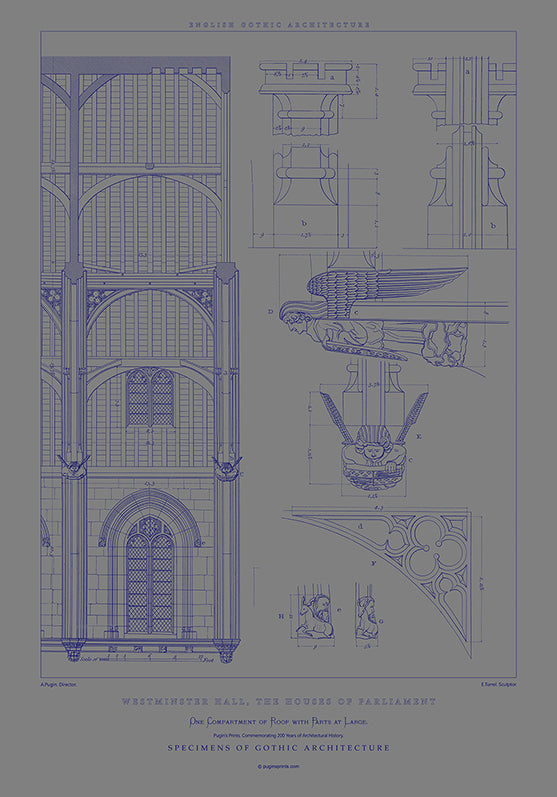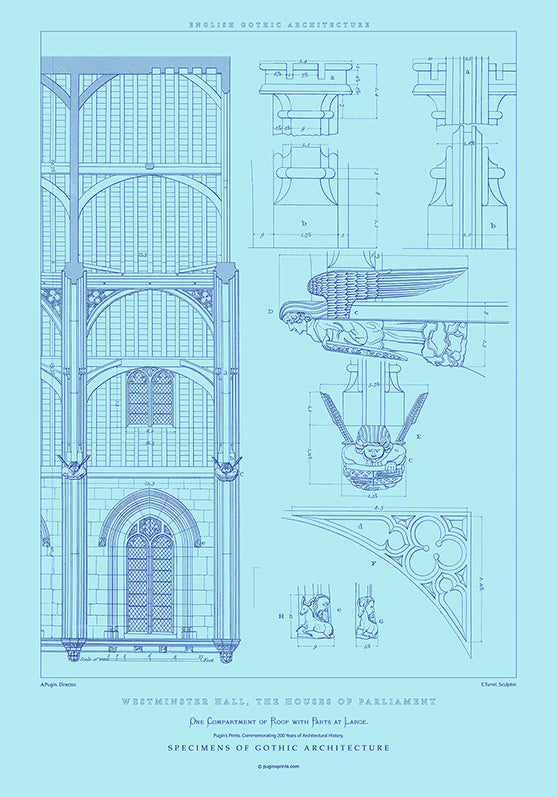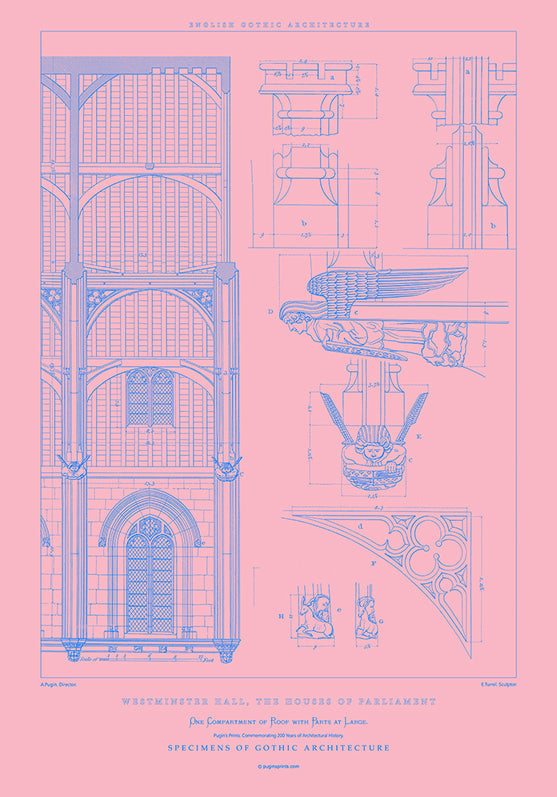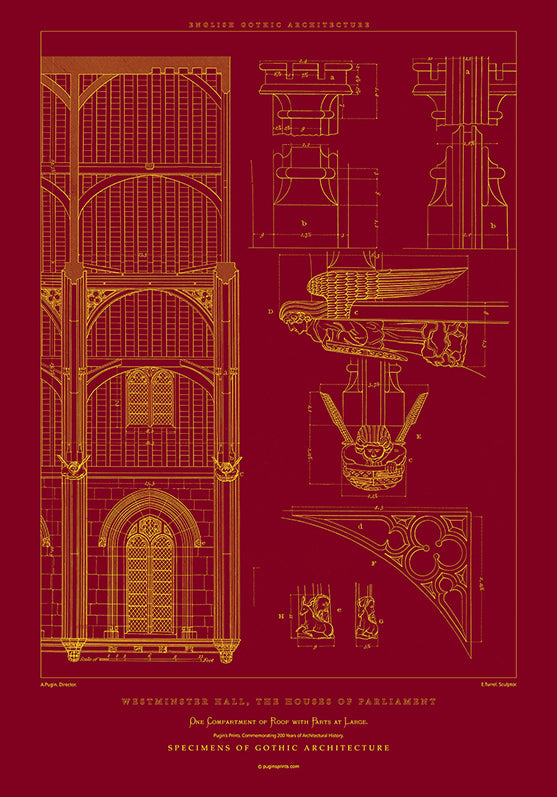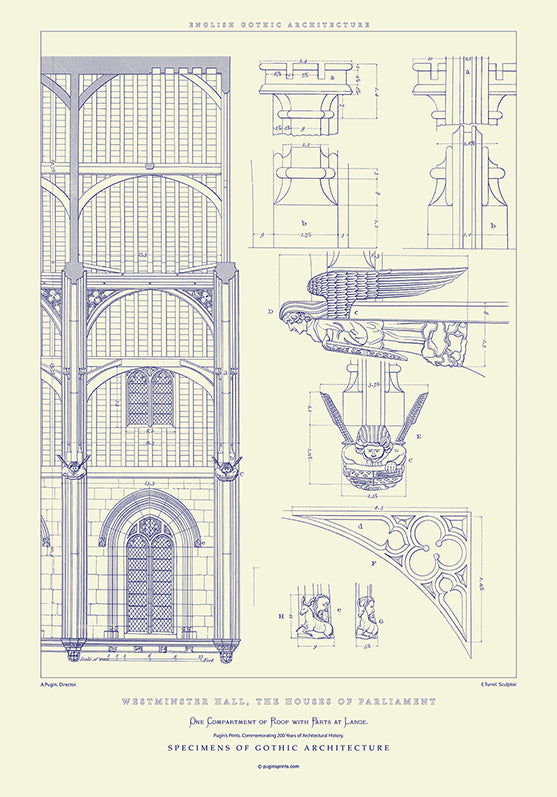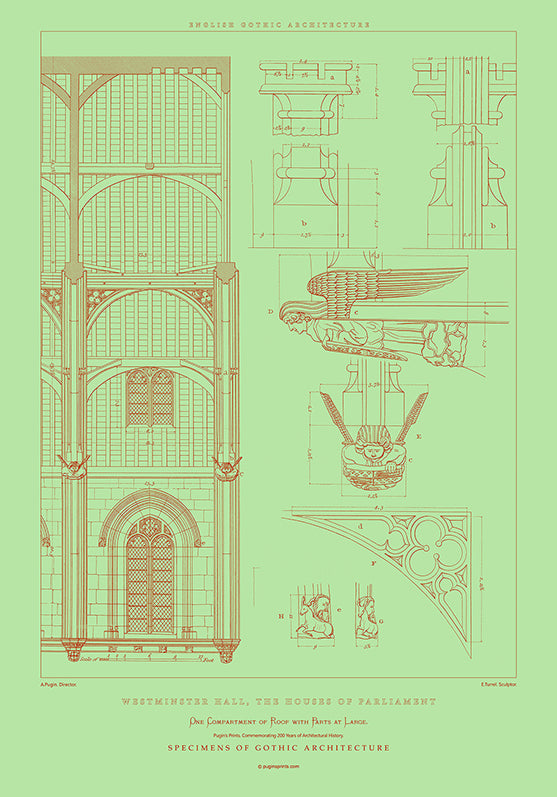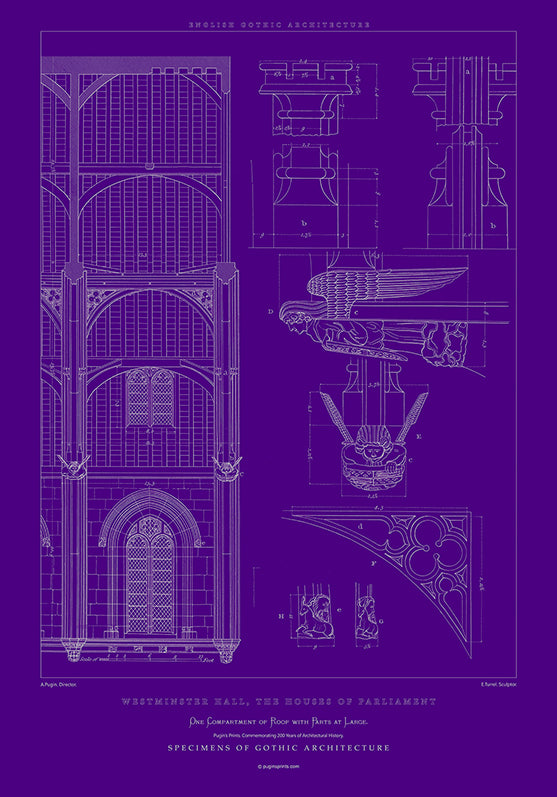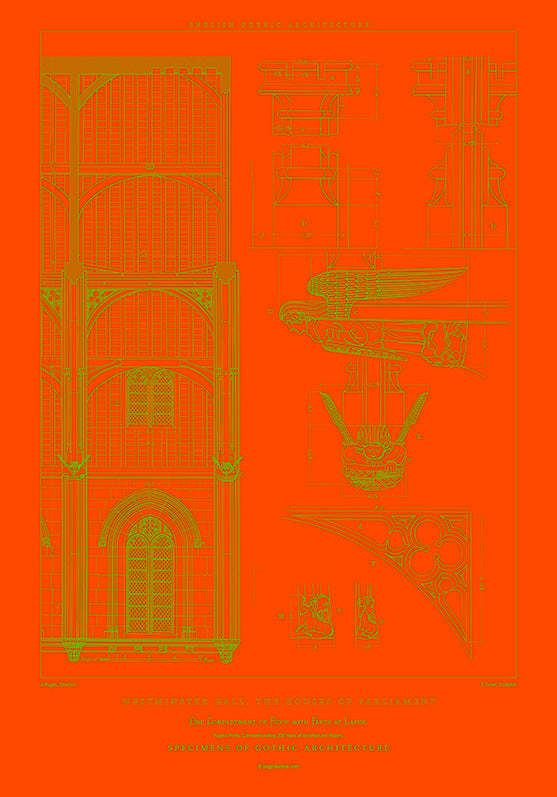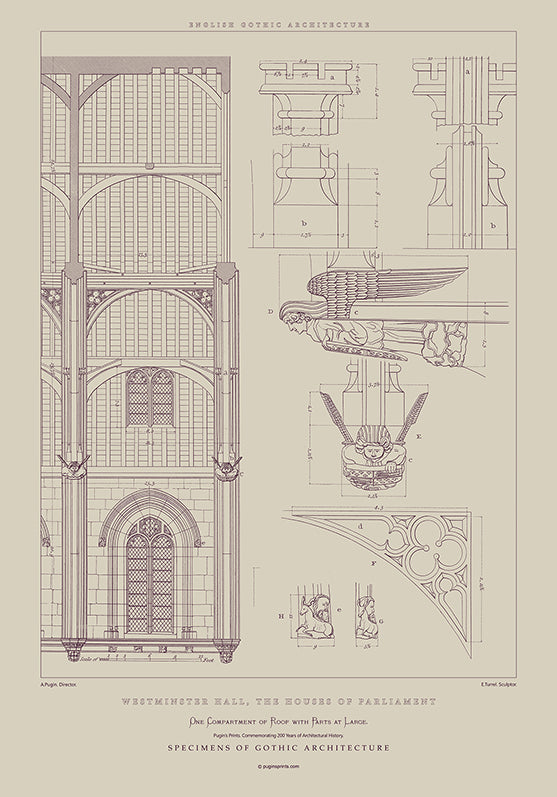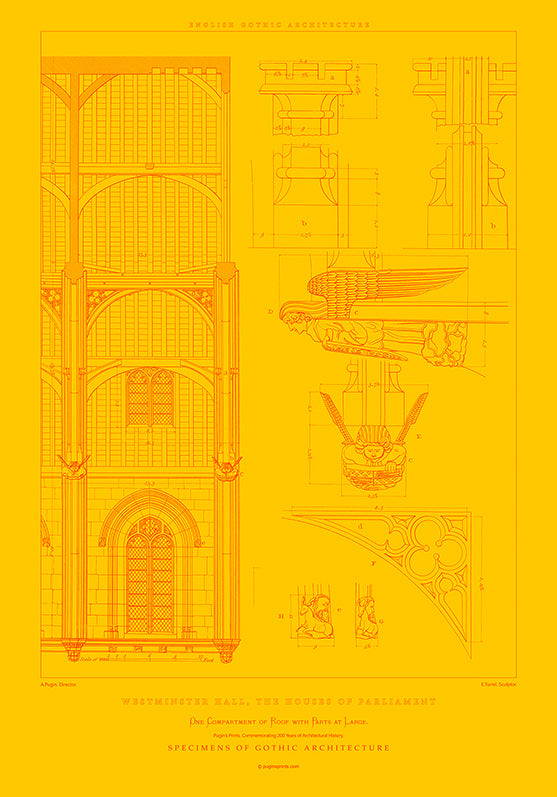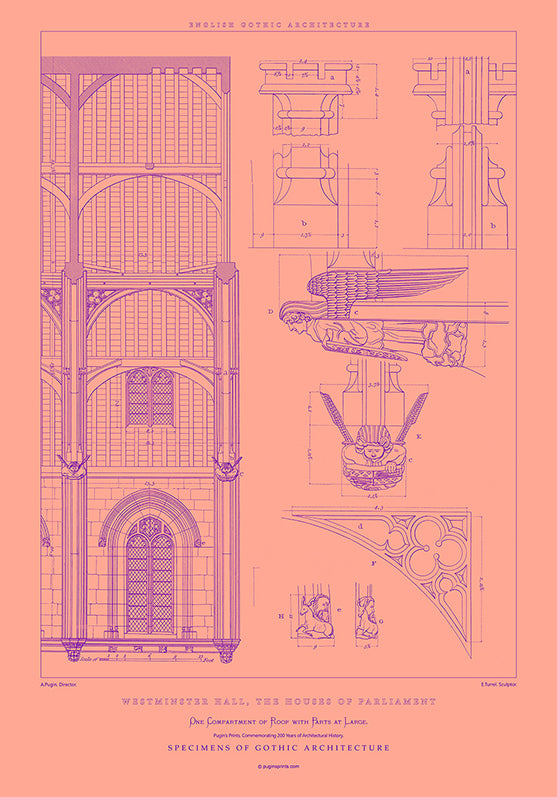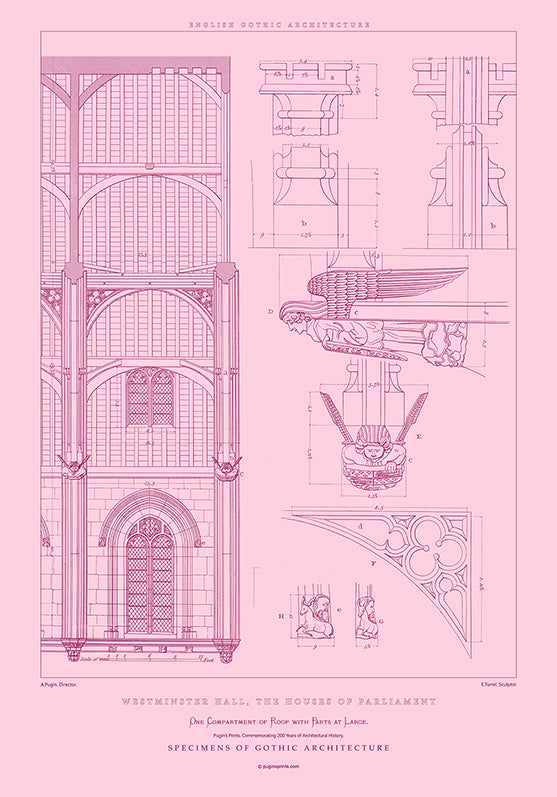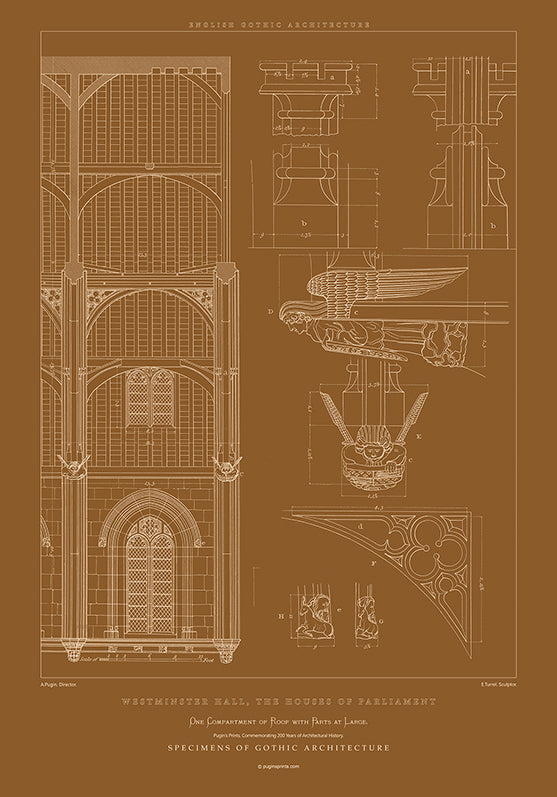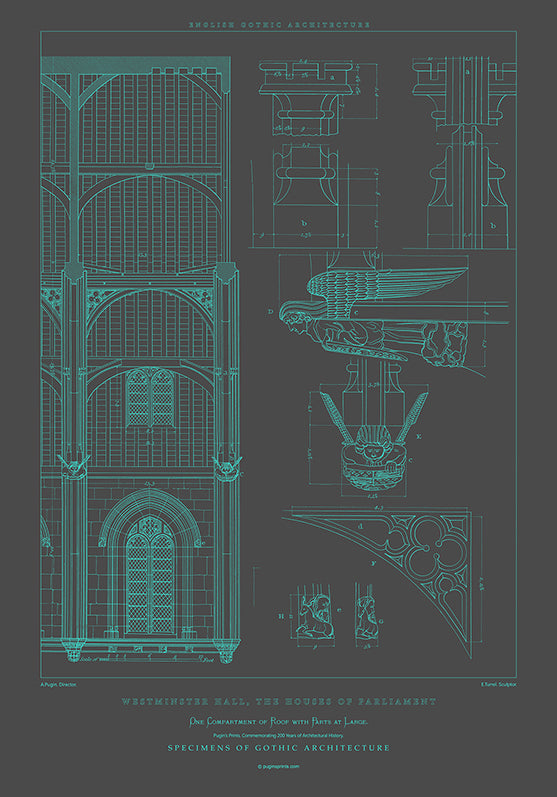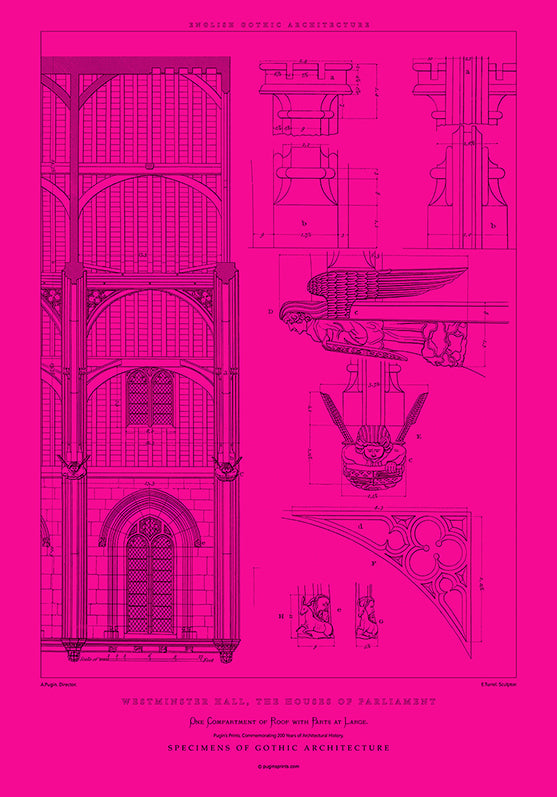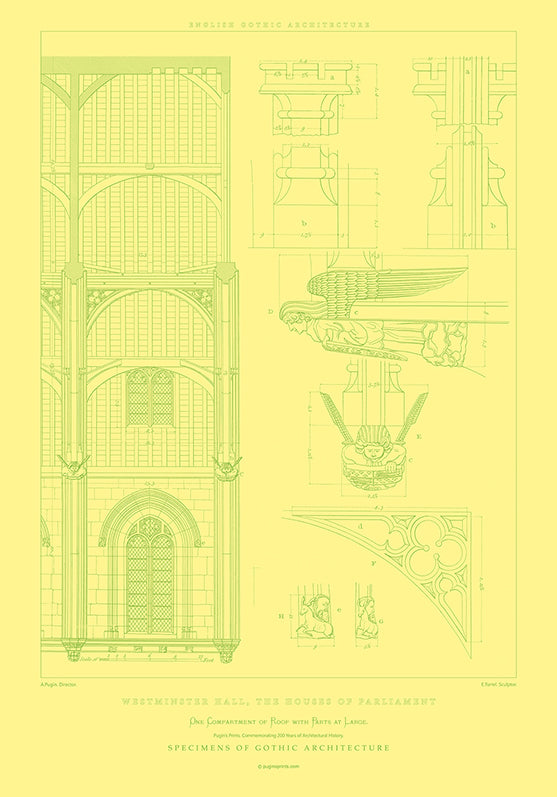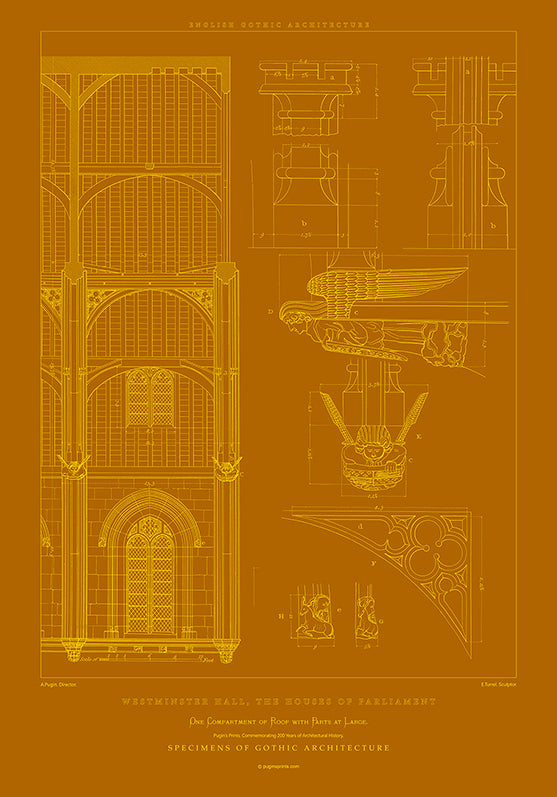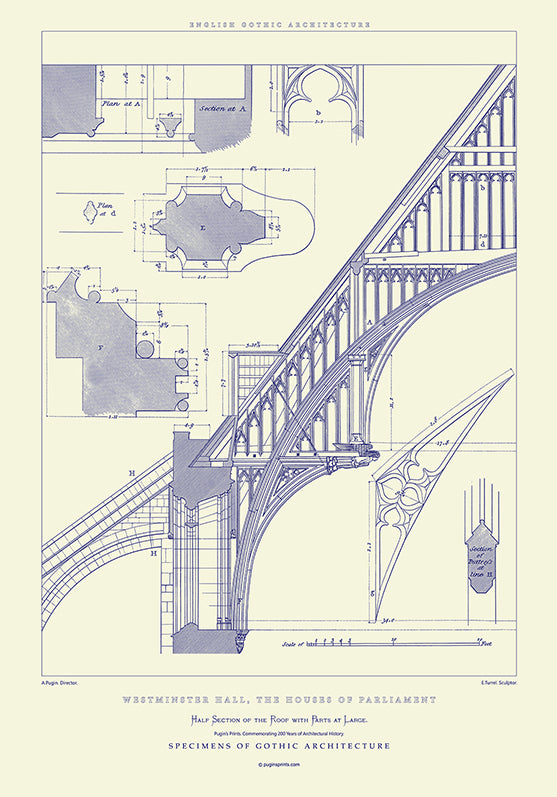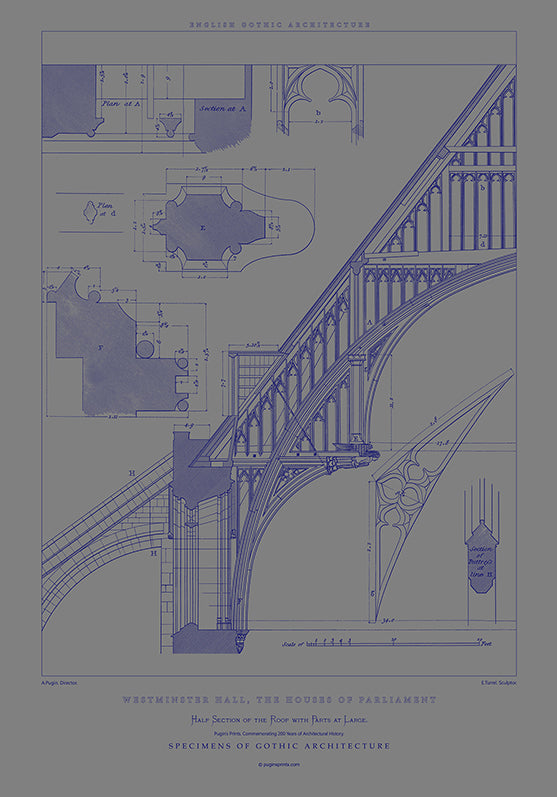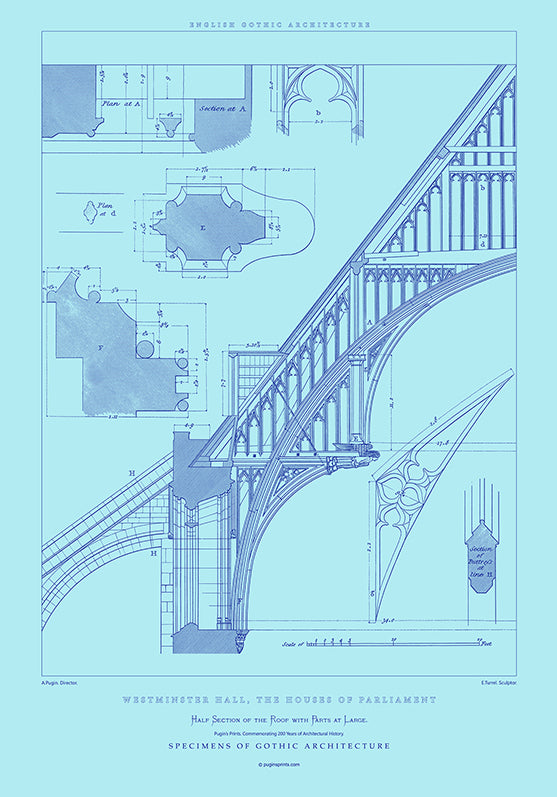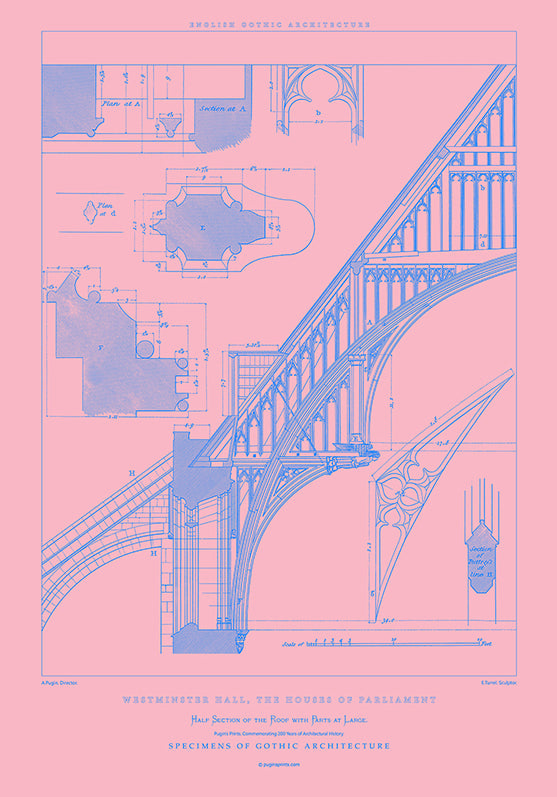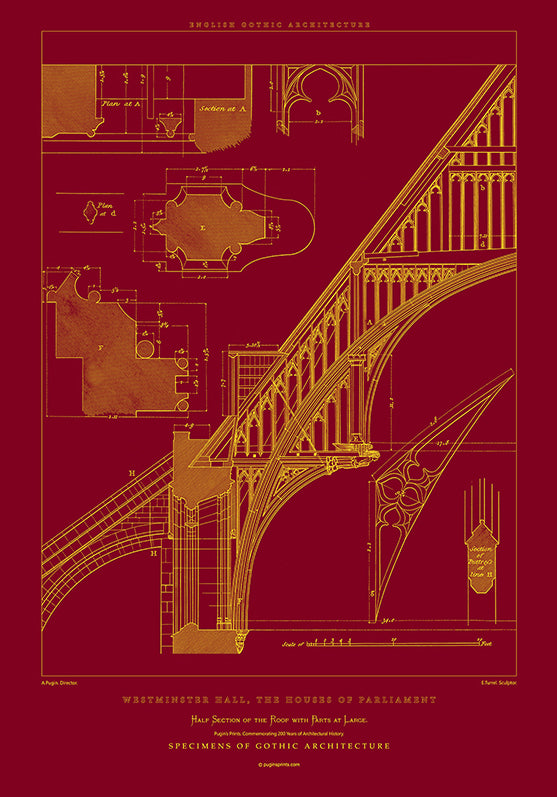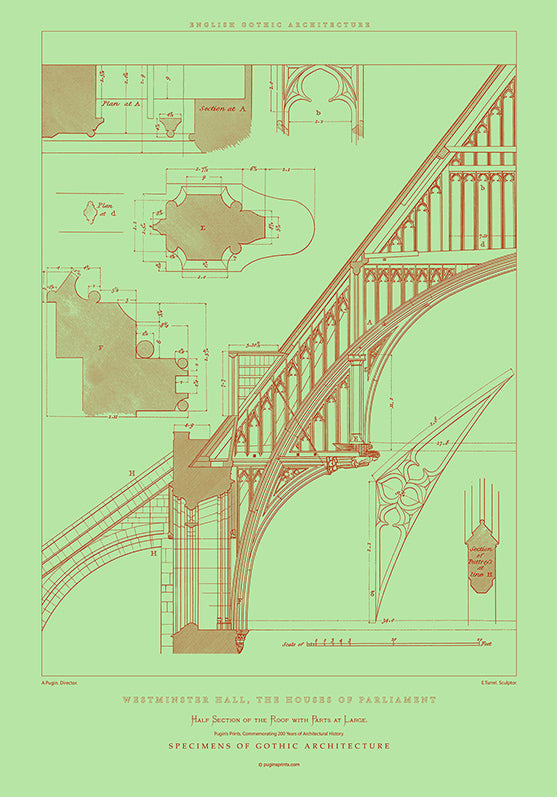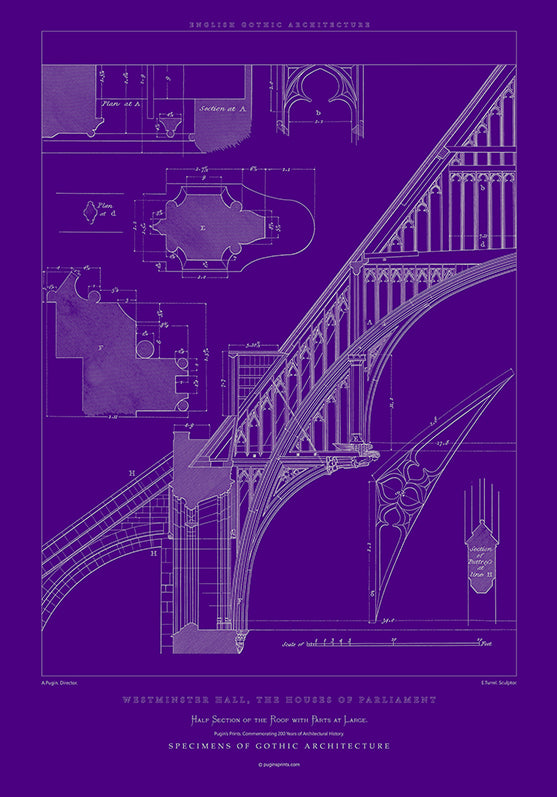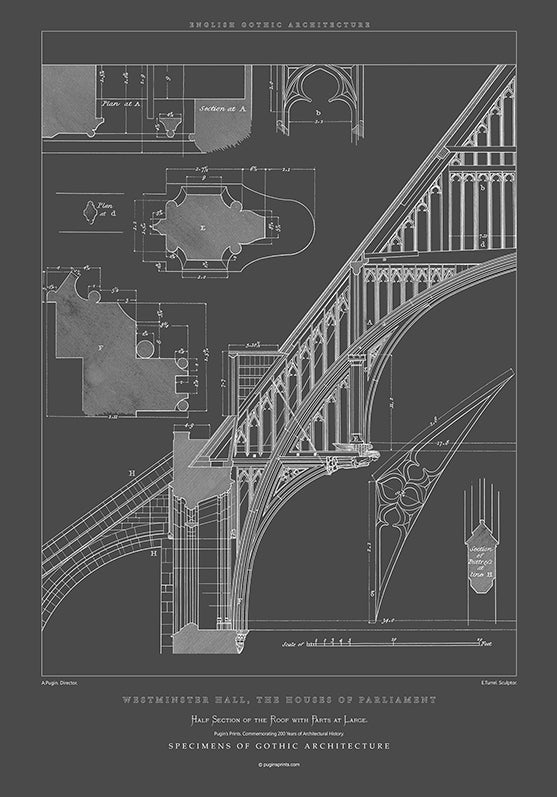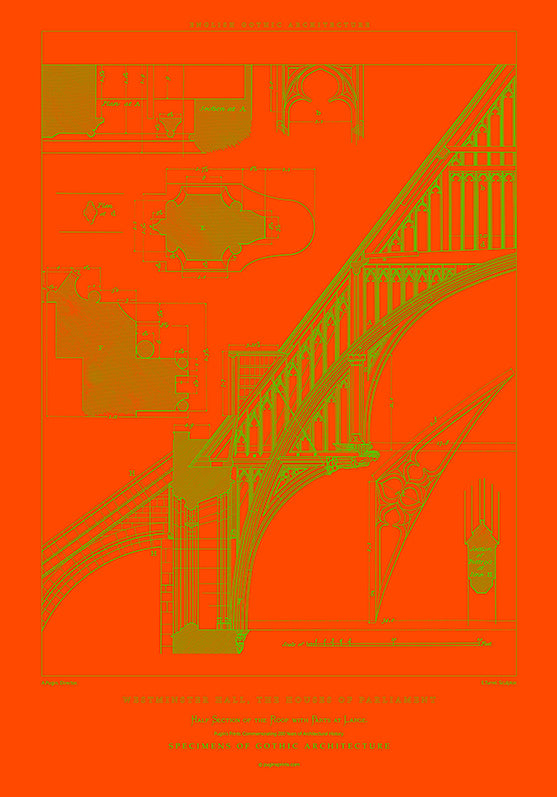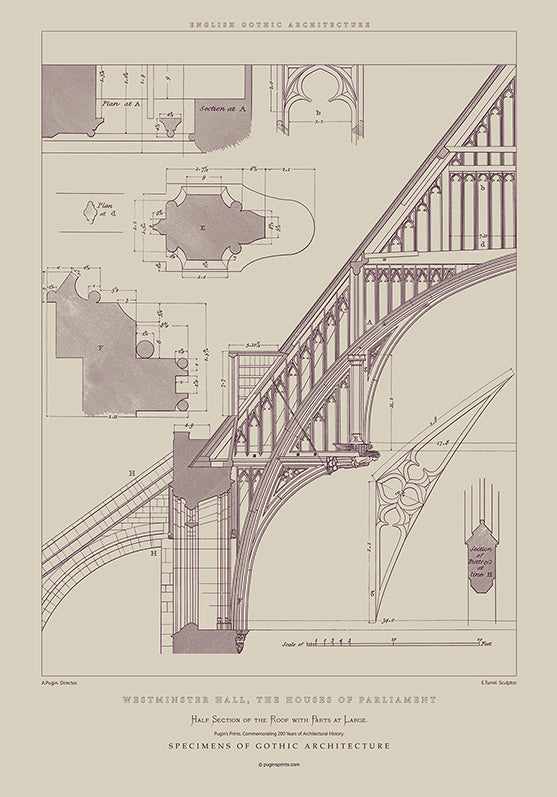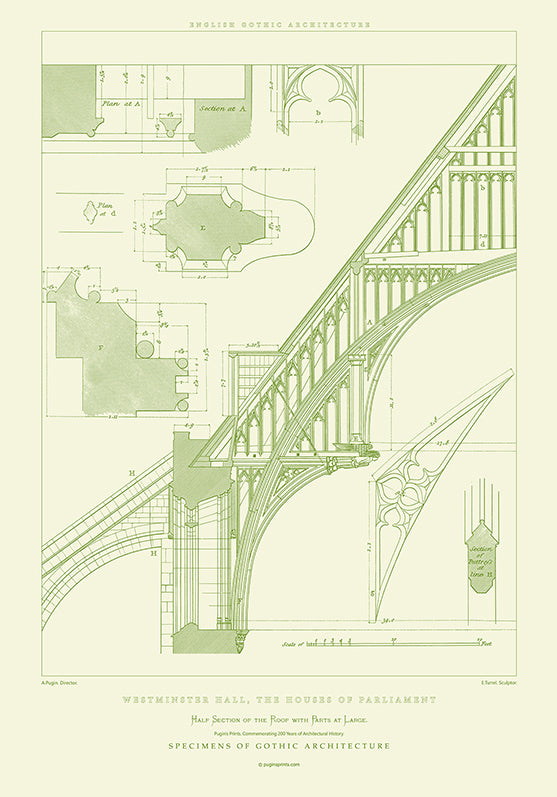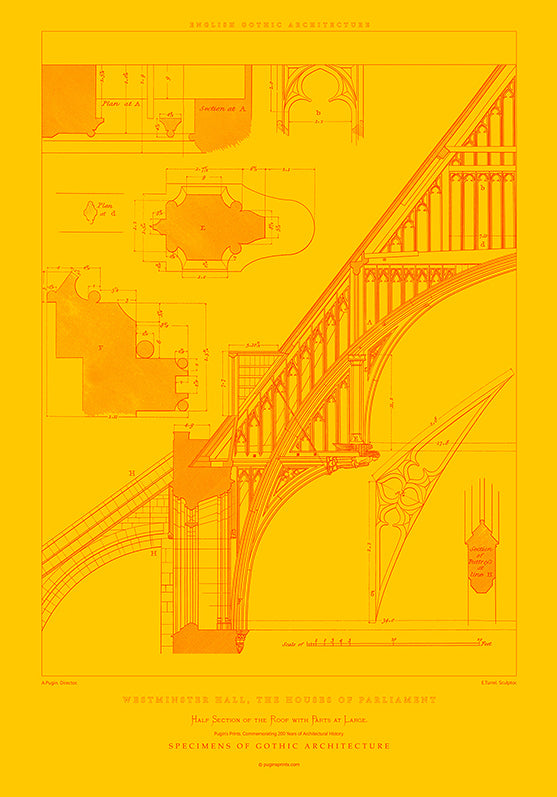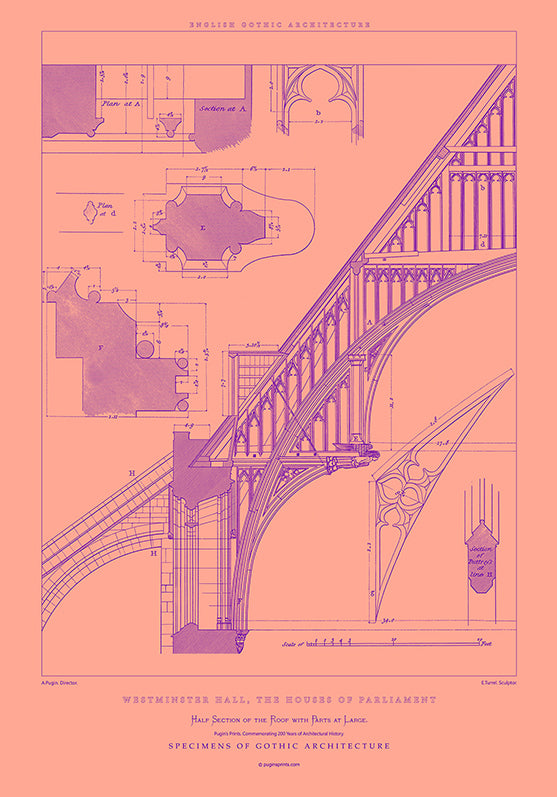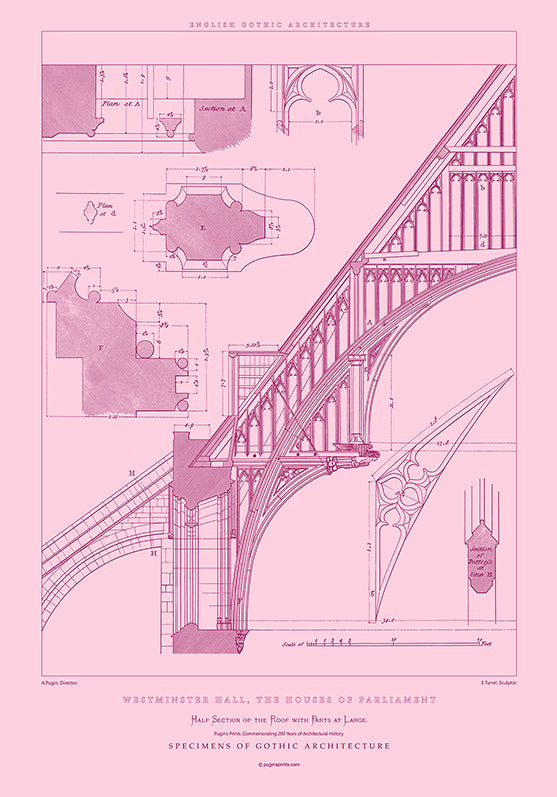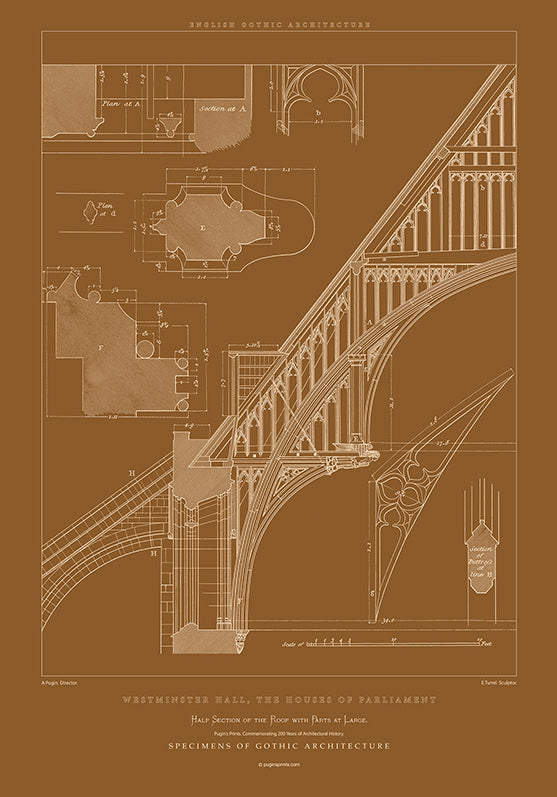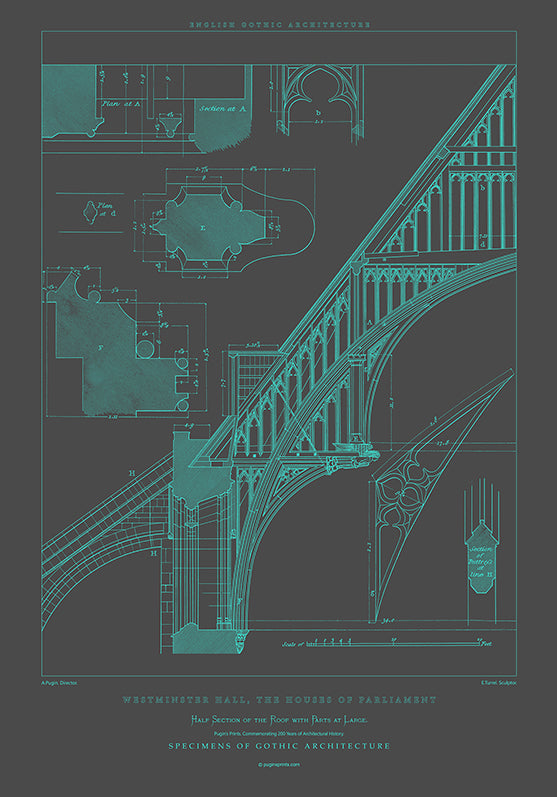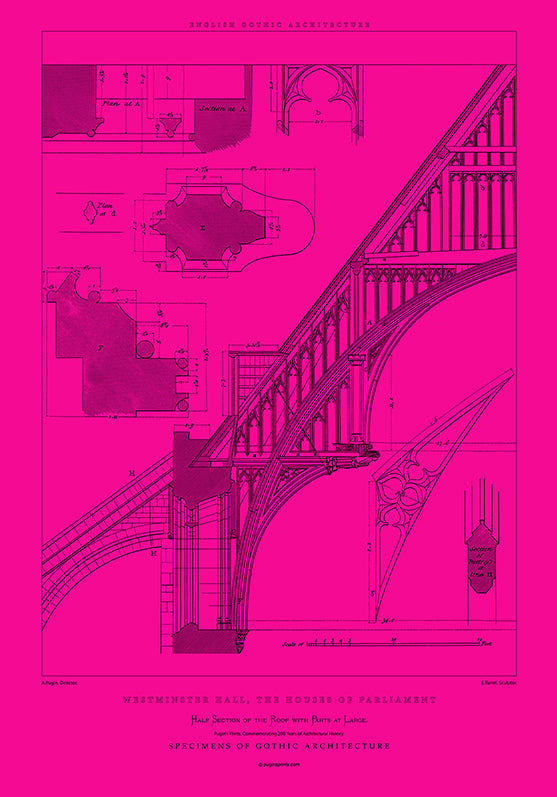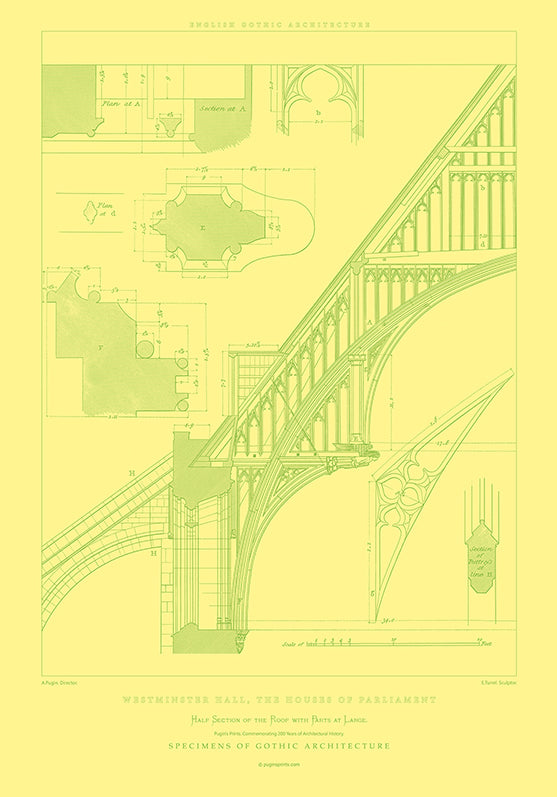Collection: Westminster Hall
Architectural Grandeur
- Built in 1097 by William II (William Rufus), it was the largest hall in Europe at the time, a bold statement of Norman power.
- Its hammerbeam roof, installed in the 1390s under Richard II, is one of the largest medieval timber roofs in Northern Europe, no central supports, just soaring oak beams like a Gothic ribcage.
- The roof was designed by Hugh Herland, and the intricate carvings and angels were likely influenced by the same late-medieval aesthetic that Pugin later revived.
Survival & Restoration
- It survived the Great Fire of 1834, which destroyed much of the old Palace of Westminster. A shift in the wind and heroic firefighting saved the hall, a literal and symbolic preservation of continuity.
- Charles Barry and Augustus Pugin incorporated the hall into their Gothic Revival redesign of the new Houses of Parliament, making it a bridge between medieval and Victorian visions of governance.
Political & Ceremonial Power
- It has hosted coronation banquets, state trials (including those of Charles I, Guy Fawkes, and Thomas More), and lying-in-state ceremonies for monarchs and prime ministers.
- The hall is still used for major ceremonial addresses, such as speeches by Nelson Mandela, Barack Obama, and Pope Benedict XVI, a rare honour.
Symbolism & Legacy
- Westminster Hall is a Grade I listed building and part of a UNESCO World Heritage Site, alongside Westminster Abbey and St Margaret’s Church.
- The hall’s floor is slightly sloped to allow for drainage, a subtle but clever medieval design feature.
- It’s often seen as the cradle of English democracy, where the evolution of Parliament and the rule of law took root.
4 products
-
Westminster hall 1
From £50.00From £50.00/ -
Westminster hall 2
From £50.00From £50.00/ -
Westminster hall 3
From £50.00From £50.00/ -
Westminster hall 4
From £50.00From £50.00/

